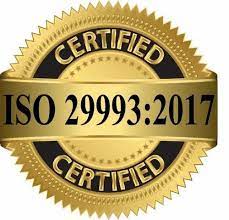|
How
the USAEconomy
Works
In
every economic system, entrepreneurs and managers bring together natural resources, labor, and technology to
produce and distribute goods and services. But the way these different elements are organized and used also
reflects a nation's political ideals and its culture.
The United States is often described as a "capitalist" economy, a term coined by
19th-century German economist and social theorist Karl Marx to describe a system in which a small group of people
who control large amounts of money, or capital, make the most important economic decisions. Marx contrasted
capitalist economies to "socialist" ones, which vest more power in the political system. Marx and his followers
believed that capitalist economies concentrate power in the hands of wealthy business people, who aim mainly to
maximize profits; socialist economies, on the other hand, would be more likely to feature greater control by
government, which tends to put political aims -- a more equal distribution of society's resources, for instance --
ahead of profits.
While those categories, though oversimplified, have elements of truth to them, they
are far less relevant today. If the pure capitalism described by Marx ever existed, it has long since disappeared,
as governments in the United States and many other countries have intervened in their economies to limit
concentrations of power and address many of the social problems associated with unchecked private commercial
interests. As a result, the American economy is perhaps better described as a "mixed" economy, with government
playing an important role along with private enterprise.
Although Americans often disagree about exactly where to draw the line between their
beliefs in both free enterprise and government management, the mixed economy they have developed has been
remarkably successful.
Basic Ingredients of the U.S.
Economy
The first ingredient of a nation's economic system is its natural resources. The United States is
rich in mineral resources and fertile farm soil, and it is blessed with a moderate climate. It also has extensive
coastlines on both the Atlantic and Pacific Oceans, as well as on the Gulf of Mexico. Rivers flow from far within
the continent, and the Great Lakes -- five large, inland lakes along the U.S. border with Canada -- provide
additional shipping access. These extensive waterways have helped shape the country's economic growth over the
years and helped bind America's 50 individual states together in a single economic unit.
The second ingredient is labor, which converts natural resources into goods. The
number of available workers and, more importantly, their productivity help determine the health of an economy.
Throughout its history, the United States has experienced steady growth in the labor force, and that, in turn, has
helped fuel almost constant economic expansion. Until shortly after World War I, most workers were immigrants from
Europe, their immediate descendants, or African-Americans whose ancestors were brought to the Americas as
slaves.
In the early years of the 20th century, large numbers of Asians immigrated to
the United States, while many Latin American immigrants came in later years.
Although the United States has experienced some periods of high unemployment and
other times when labor was in short supply, immigrants tended to come when jobs were plentiful. Often willing to
work for somewhat lower wages than acculturated workers, they generally prospered, earning far more than they would
have in their native lands. The nation prospered as well, so that the economy grew fast enough to absorb even more
newcomers.
The quality of available labor -- how hard people are willing to work and how skilled
they are -- is at least as important to a country's economic success as the number of workers. In the early days of
the United States, frontier life required hard work, and what is known as the Protestant work ethic reinforced that
trait. A strong emphasis on education, including technical and vocational training, also contributed to America's
economic success, as did a willingness to experiment and to change.
Labor mobility has likewise been important to the capacity of the American economy to
adapt to changing conditions. When immigrants flooded labor markets on the East Coast, many workers moved inland,
often to farmland waiting to be tilled. Similarly, economic opportunities in industrial, northern cities attracted
black Americans from southern farms in the first half of the 20th century.
Labor-force quality continues to be an important issue. Today, Americans consider
"human capital" a key to success in numerous modern, high-technology industries. As a result, government leaders
and business officials increasingly stress the importance of education and training to develop workers with the
kind of nimble minds and adaptable skills needed in new industries such as computers and telecommunications.
But natural resources and labor account for only part of an economic system. These
resources must be organized and directed as efficiently as possible. In the American economy, managers, responding
to signals from markets, perform this function. The traditional managerial structure in America is based on a
top-down chain of command; authority flows from the chief executive in the boardroom, who makes sure that the
entire business runs smoothly and efficiently, through various lower levels of management responsible for
coordinating different parts of the enterprise, down to the foreman on the shop floor. Numerous tasks are divided
among different divisions and workers. In early 20th-century America, this specialization, or division of labor,
was said to reflect "scientific management" based on systematic analysis.
|










